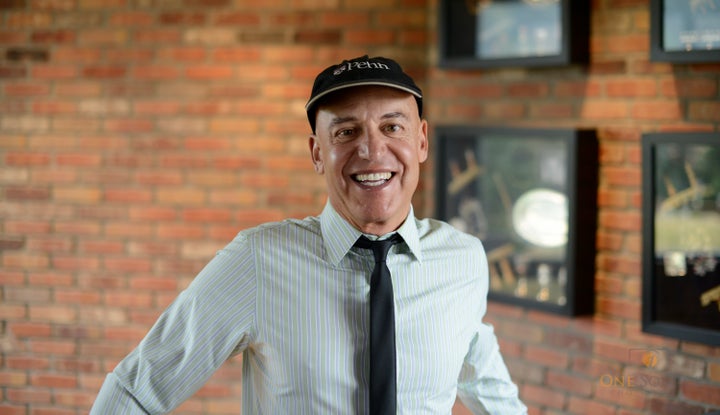
Paul Zane Pilzer is the founder of Zaniac, a rapidly growing STEAM enrichment learning center for kids K-8th grade. Zaniac has 13 locations nationwide.
Choices: Public Schools. Public Charter Schools. Private Schools. Home Schooling. In his first speech to Congress, President Trump called education “the civil rights issue of our time.” The future of education is about to change, but we shouldn’t fear this change. Public school isn’t going anywhere. While the debate about the best educational system grows louder, we’ve lost sight of the real question amidst the noise: What’s the best educational system for my child? The answer is inclusive—all four.
Public schools are not going out of business. Public Schools, Public Charter Schools, Private Schools funded with vouchers and Home Schooling will all thrive under the new administration. We will see infrastructure redevelopment and job creation which will stimulate the economy, and improve public schools. In fact, a groundswell of new money will go to public schools.
Far from going away, public schools will now need to compete as education becomes synonymous with choice. Change can be uncomfortable and feel threatening, but public schools can offer benefits that other types of schools cannot tout. Each type of school has features and benefits. Each school has an opportunity to promote its unique offerings, instead of trying to block change. Change is inevitable.
While there’s a natural tendency to hold on to what’s familiar, what we are used to isn’t always what’s better for our country, for our schools, and for our children.
There doesn’t have to be one right answer or one school that wins to the detriment of other schools. Let’s shift away from debating which school is better in comparison to the other and begin asking the most important question: What’s the best school and curriculum for my child? The answers are the pathway to forming a stronger educational system in the United States.
Let’s take a look at how education is about to change in America and why we should welcome the change.
We have the freedom of choice. Parents should now feel like they have options. No longer are we told what school to attend based on where we live. If there is only one choice, you are held hostage. Instead, we can all be a part of choice. Education is not for the government to decide—it’s for each parent and child to decide. The best school for a child in one family might not be the best school for a sibling. The decision is different for each child. Parents should review the best school for each child based on individual interests, how they learn and what motivates them. I never knew this before as an economist, but I know it today as a father of four children ages 12-16. Now there are more options for every parent. When you have more choices, you will more like the school you have chosen.
Find a school to help your child thrive. Do your own benchmarking for your child. Follow how your child is doing in school to determine what type of school would help your child thrive. Ask yourself: What’s the best mix for my child? Today, parents can assess their child’s interests, talents and strengths and choose a school that can best enhance each individual child’s future. This isn’t a decision solely made on academics. Select a school for your child where you can get specific programs that you can’t get elsewhere.
My four children all attend public schools—both charter and traditional public. Two of my children attend our relatively larger public schools because of science and math programs they can’t get elsewhere. Some of my neighbors send their kids to our larger public school for football and other sports. My oldest son goes to the local public high school because he’s in honors math. They have the biggest and the best chemistry lab, so this is the best school for his talents and interests. Public schools can spend more on a chemistry lab than a private school because of the sheer volume of kids—a public school knows its chemistry lab will be used. My youngest son loves robotics and is part of the robotics team. He goes to a public school where there are 1,000 kids because he can be more challenged in robotics and find kids with similar interests. He can compete with robotics and fuel his STEM-passion.
My son who has loved snowboarding since he was 5-years old goes to a fulltime charter school. Everyone at this school is an athlete and it’s an extremely disciplined school. While it began as a private school, the state took it over as a public charter school. Charter schools can help your child foster and develop a passion. My middle son was just accepted at this elite public charter school and athletics is his motivation as well.
Get your children involved in the decision-making process to motivate them. My kids chose their own schools. When a child is part of the decision-making process you can help them be more intrinsically motivated to succeed. Choice leads to motivation. My kids know they can’t stay in an athletic program if their grades don’t stay up. Motivation is tied to their choice. My kids are an integral part of the decision-making process. Find programs your child loves and use them as a carrot to keep your child engaged. Education will shift on a state level. The Federal government will give more latitude to the states to decide and loosen federal money on what each state can buy. The new administration is absolutely committed to vouchers for private schools—coupons for kids to attend private school. Once the details are worked out, the government will set a bar. The big question will be: How high should this bar be? Each state will have its own rules. Again, this isn’t change to be feared. Choice gives birth to innovation.
No longer will we simply ask our kids, “What did you do in school today?” We will be asking ourselves, What does my child need today and are they getting it from their current school? Everyone wins when we focus on the quality and success of students’ learning experience. Let’s put our energy into where it makes the most difference—in our children’s future.
Change is coming. Education will be about choice. There is no best school or one right answer for all children. There’s only the best school and right answer for your child.
Paul Zane Pilzer is an American economist, New York Times best-selling author and social entrepreneur. He has written 11 books and is the founder of six companies, including Zaniac, a national STEAM-enrichment company with 13 franchises nationwide. He’s been profiled in more than 100 publications, including on the front page of The Wall Street Journal. You can contact Paul via his website at PaulZanePilzer.com.
